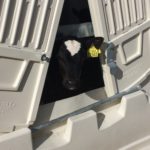
This spring was our first year to try using calf hutches, calf jackets and a calf barrow and I said at the time that I’d review should any readers be considering using any of them. It’s taken me a while to get around to doing it but better late than never I guess.
Calf Coats
First up the calf jackets. They varied in price from €19-€35 if I remember correctly. The calves wore them for about six weeks until the weather improved. I was glad we’d got them, I’d have felt very guilty putting newborn calves into the hutches where they had to feed from the teat feeders outdoors especially as it rained a lot during the first two weeks of use. Apparently newborn calves find it hard to regulate their body temperature for their first two weeks, and if it is cold, they will use a lot of energy to stay warm.
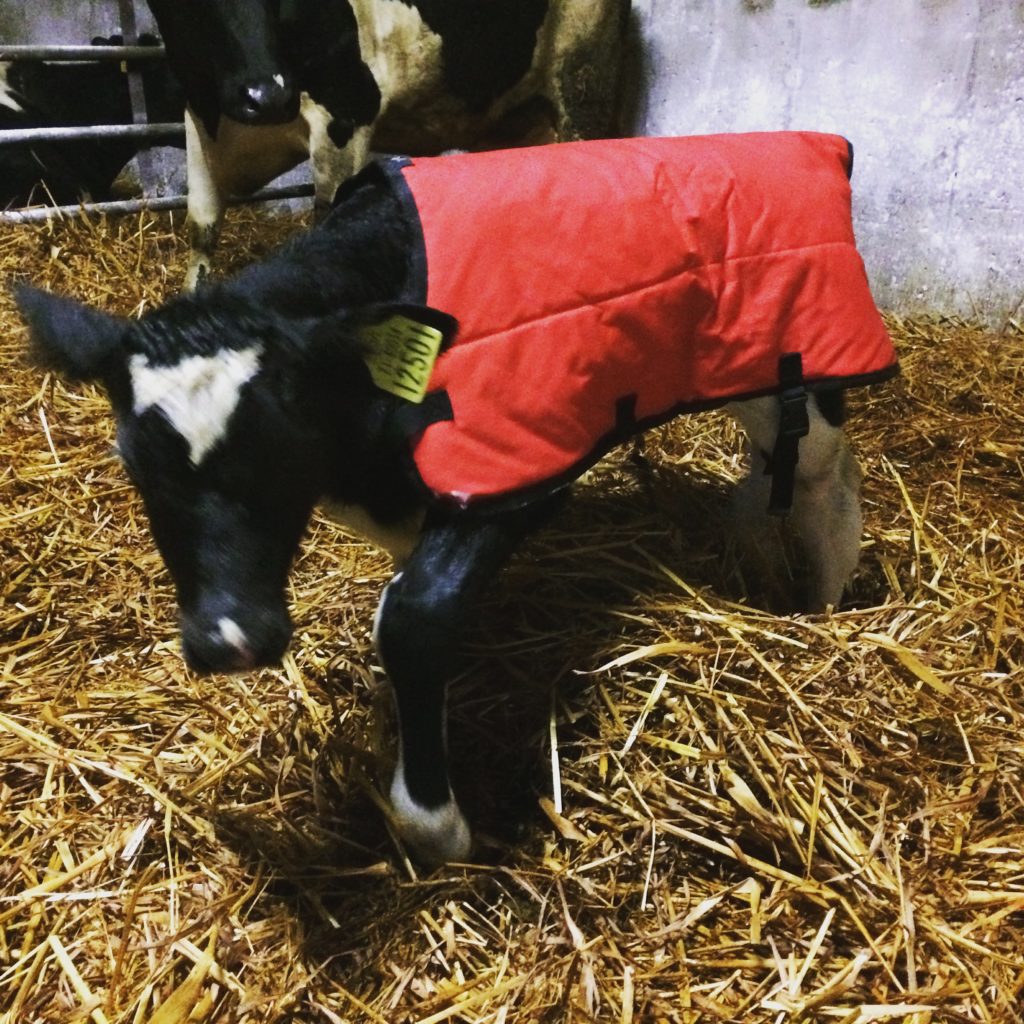
These red ones came from Connaught Agri and a similar grey one came from an Agri company in Tipperary. They seemed warm enough, the straps are easy enough to adjust. It’s amazing how quickly they grow, back leg straps that seemed to go on for ever when they were born, have to be adjusted to the absolute maximum a few weeks later. The only thing about these coats was that they ended up looking a bit like a hat rather than a coat on the bigger calves at the end in that they only covered half their sides and were getting a bit tight in the length. They were fine as we were taking them off around the 6 week stage but would be too tight if leaving on any longer.
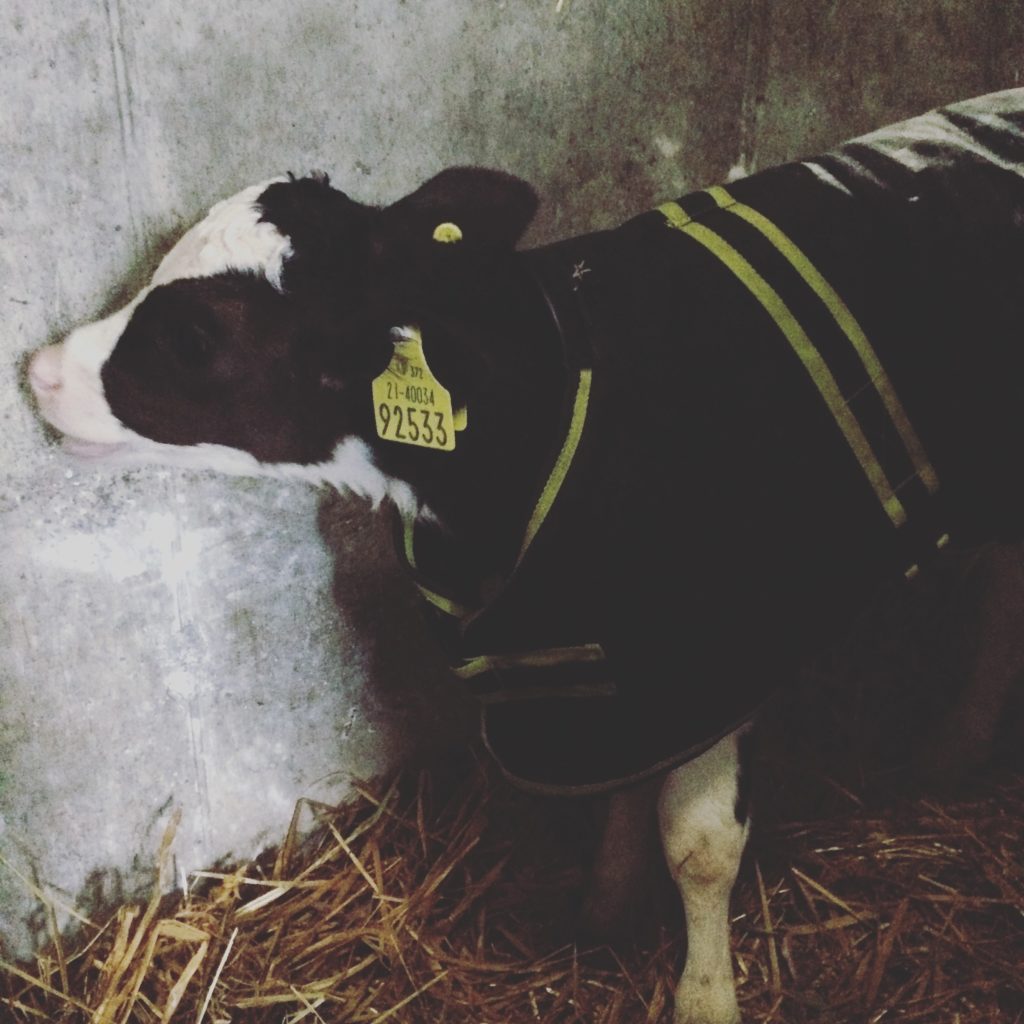
This calf jacket was the most expensive, at €35, we only got two of them! To be honest, it was a bit too much belts and braces – so many straps (only one more than other designs but it seemed a lot), the luminous stripes (which would be handy if a calf disappeared into a field in the middle of the night admittedly) and it was quite bulky.
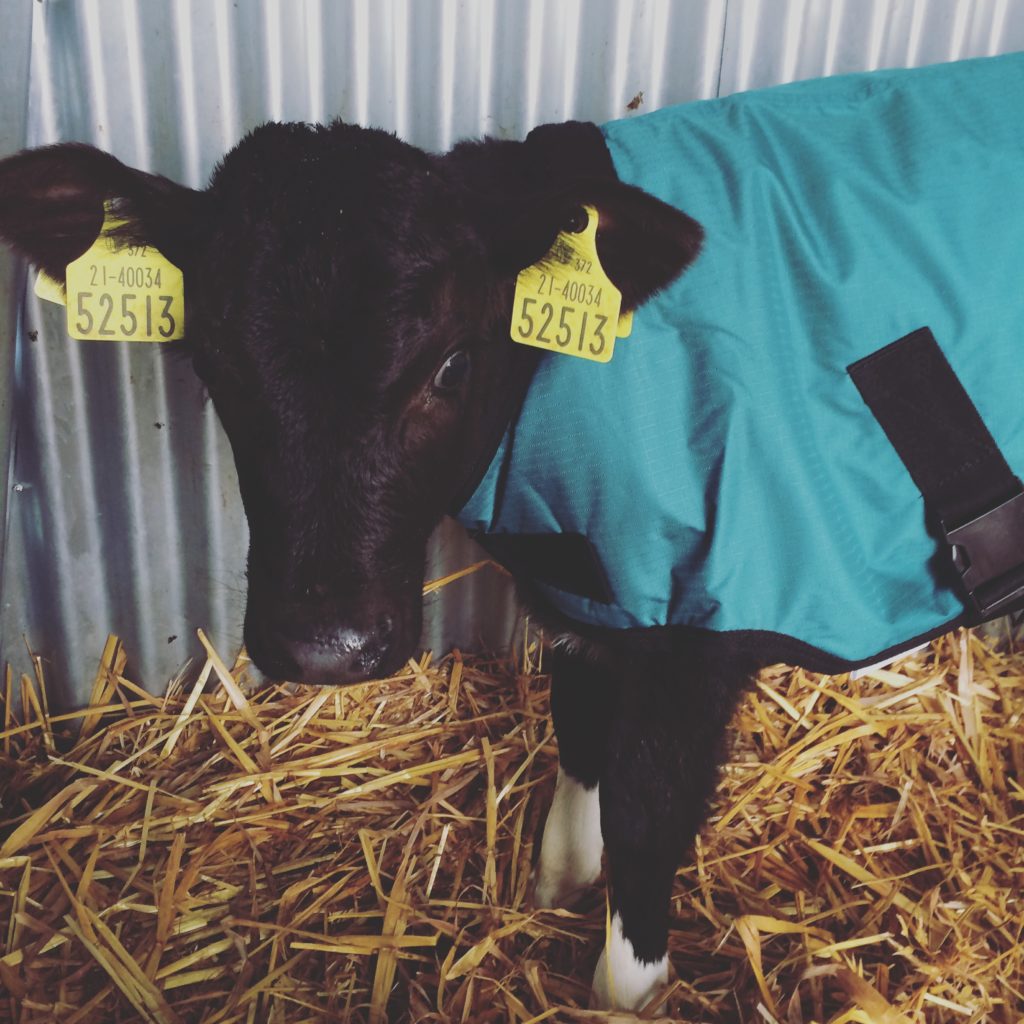
This one was my favourite. They were quite long so still covered the entire body as the calves grew. The straps were built into the design in a way so looked comfortable and they were easier to adjust as the calf grew. The fabric was nice and soft too. Put it this way, I wouldn’t have said no to a coat like that in a design for a human! I think these were €29 each and from Buyrite Solutions.
Were the calf jackets worth it? Did they make a difference? Well, I think it would have been pretty miserable for young calves to have to come outside into an uncovered yard to drink their milk while it was raining if they weren’t wearing them. The calves were healthy (we lost one to crypto, the infection just kept repeating on him and even though he was on a drip, the gut damage was too severe, and lost one to a twisted gut). We had about 3 mild cases of pneumonia and they were calves in an old shed which can get a bit warm so that was down to the location. The calves in the hutches seemed hardier than the shed-housed calves.
The coats were easy enough to wash. The washing machine washed them and only them for about four days!
Calf Barrow
The calf barrow is great – much easier than carrying them. Calves, of course, can walk very shortly after birth but it’s not so easy to get them to go where you want them to, plus their legs can be a bit skittish. It’s a case of getting them to lie on the ground and pulling them into the barrow by the legs. A hint from Ken Foster to pull them in the back legs first as this prevents them turning around in the barrow worked well. Otherwise, a lively calf will turn around and while they may look like they are enjoying the ride and the view, they can try to scramble out too.
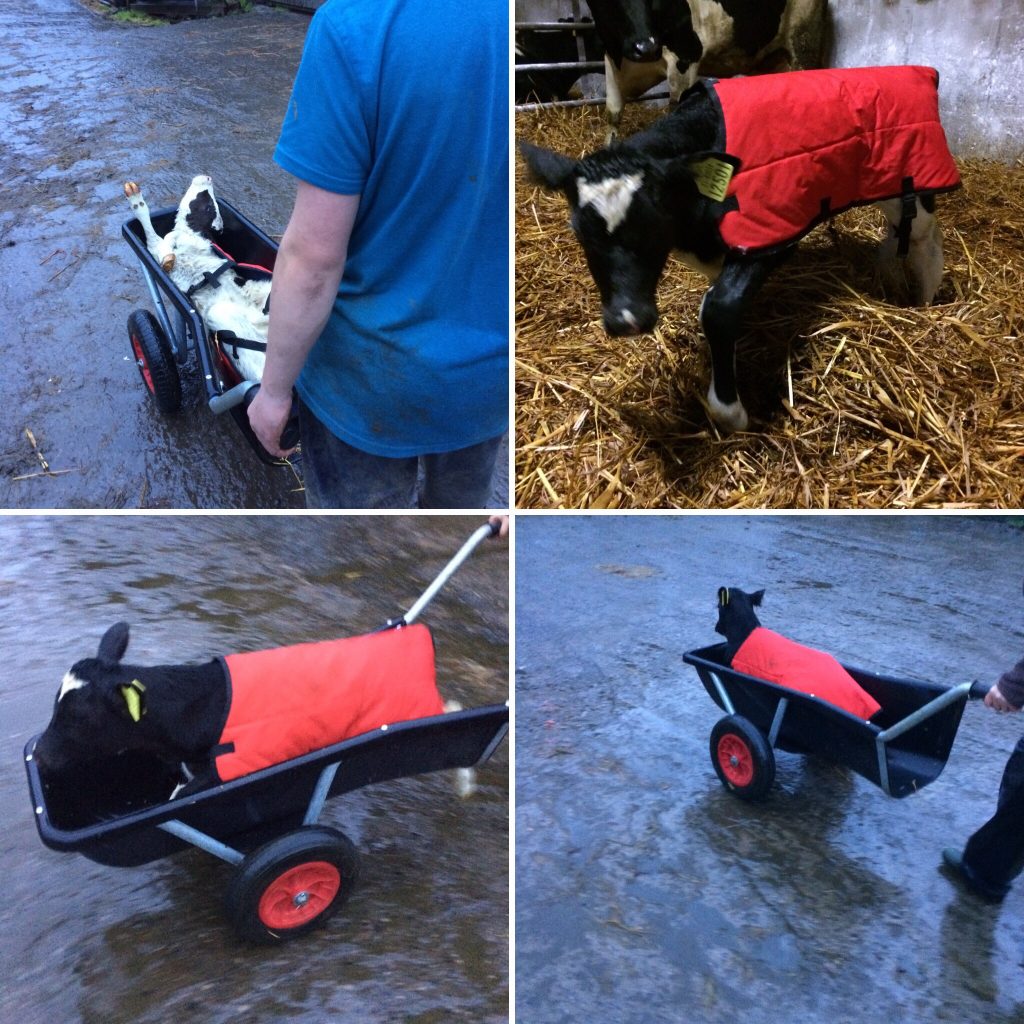
Going for a ride in a calf barrow in my new red coat
As it gets to the end of the calving season though, I have to admit the calves seem to get heavier. It’s not unknown for us both to stand beside the calf for a minute, wishing it would apparate into the barrow as we await the energy to topple it to the ground and seize it by the back legs. Believe me, some of these newborn calves can be pretty lively.
One wheel in the barrow got a puncture at the end of the season and the tube is very thin. We haven’t got around to sorting it out for next year yet but other than that, it’s a good design. It has a detachable “end” so you can use it for wheeling calf ration etc too but we didn’t get around to using it for that.
Calf Hutches
We got two different calf hutches. The toughened plastic hutches seem to be very popular. They come with lots of finicky extras such as the “window” at the rear that makes putting the first one together a bit of a challenge. We seemed to have a lot of surplus bits left over. We only got two of the plastic hutches but I’m sure you’d get into the swing of things once the first one has been worked out – the instructions aren’t the best. You can read all about my problems with assembling the gates and the lack of my meccano degree in this post. From memory, the price for hutch and gates was about €1200.
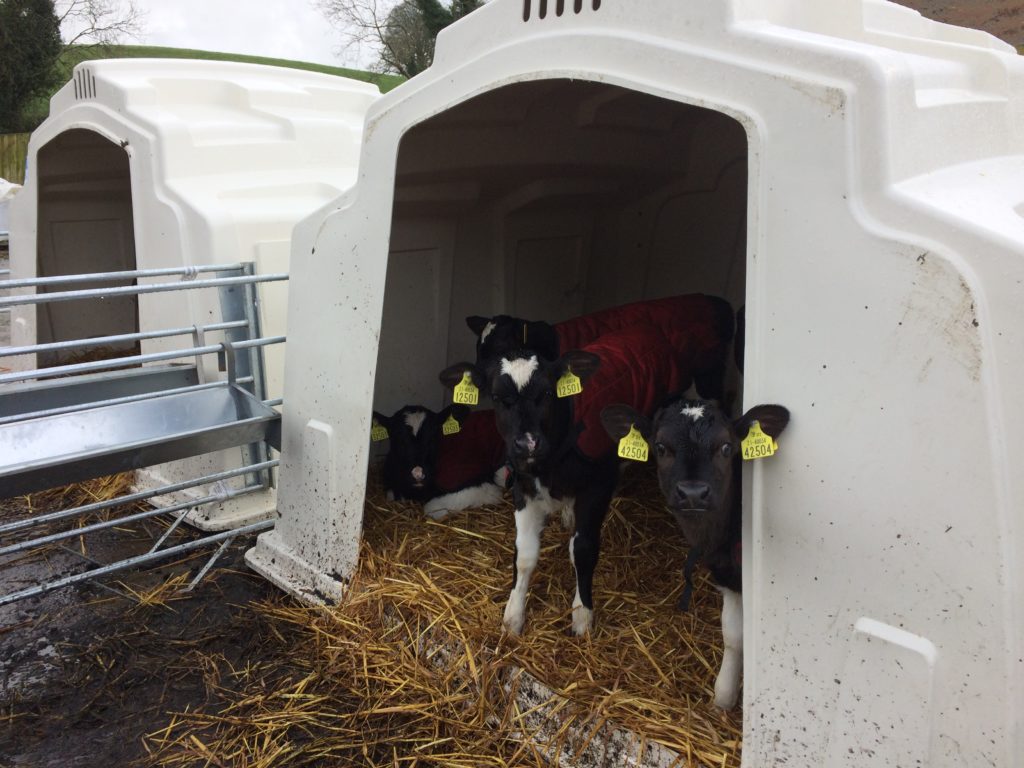
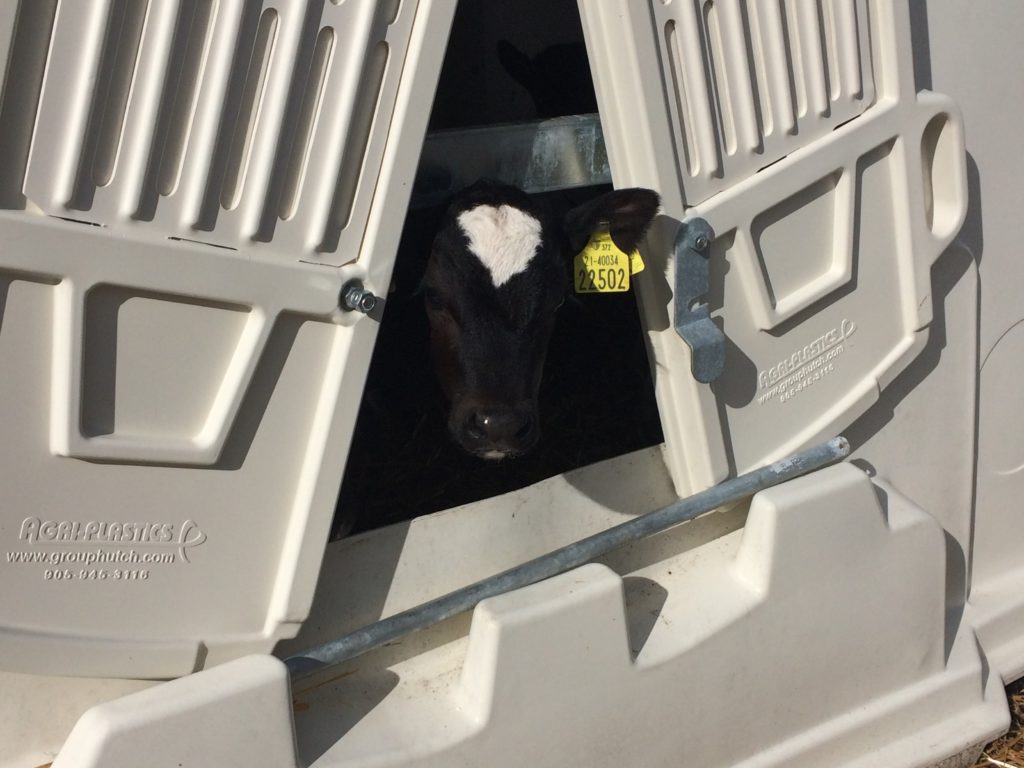
The “rear window” is there for extra ventilation on warm days and saves having to open the gate to put straw in, as it can be pushed in through the window. There is a bar across the middle to stop any houdinis and the “shutters” can go up and down. I wasn’t convinced that the calves wouldn’t get out through this gap though, so used one of the “extra” poles (that we couldn’t work out what to do with) to prop the shutters open half way. A calf still got out through it though so I wouldn’t rely on it being calfproof.
The “picket fence” style gate looks cute but wasn’t very user-friendly. I was using a calf barrow to transport the calves to the hutches. With the bigger plainer hutches with the ordinary gates, I only had to pull open a gate, wheel the barrow in and deposit the calf onto a comfy dry bed in the hutch. However, the barrow doesn’t fit through the picket gate so it’s a case of having to carry or help the calf walk to the interior of the hutch. A simple catch over the gate would have been handy too for when I just wanted to pop in with meal or water or check on a calf. The gate was tricky enough to fasten and it was a bit risky to leave it open as one of the calves was bound to decide to investigate and explore outside the gate.
These hutches are supposed to house six calves. Six is fine when they are newborns and even for the first three weeks but after that, four is enough. Even with bedding them with plenty of straw daily, it was a challenge to keep the bedding clean and dry. You can see in the photo above that straw tends to spill out of the hutch and as the calves hooves are wet from the ground outside, the bedding gets wet pretty quickly. The “front gardens” had to be swept daily. Having said that, the calves were strong, healthy and happy in them.
Secondly, the plainer, galvanised steel hutches. They cost €850 each if I remember correctly. We set up ordinary gates outside for their “front garden” which had to be pulled open and closed each time we went in or out. The calves seemed happy enough in the hutches. It’s rare enough that we get cases of pneumonia in any case but these calves were all healthy and hardy. These were to house 10 calves each and yes, it’s fine for ten baby calves but I think eight is plenty once they get to about four weeks old. I took two small calves out of one hutch which left eight and they were fine. The other hutch had nine.
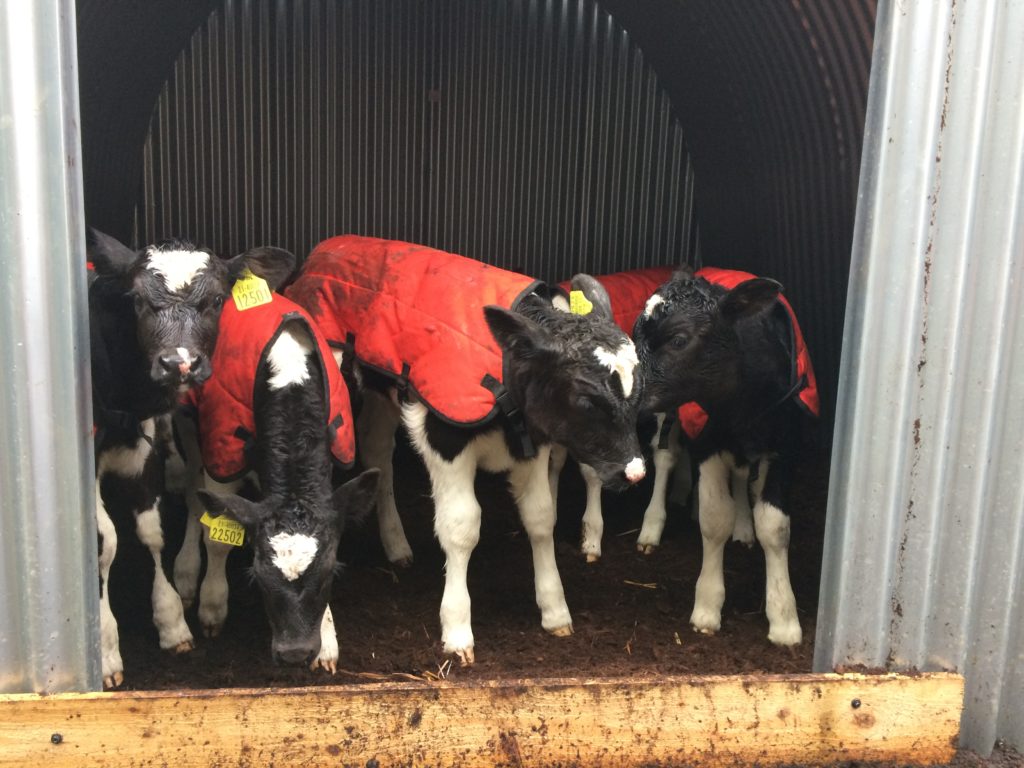
As you can see in the photo above, we decided to try peat as bedding in the hutches – partly because I’m allergic to straw and partly to see if we could cut down on a job as straw bedding needs to be replenished daily. First problem, the sales person didn’t know the product well enough. We were advised that six inches of peat would be sufficient. We divided one huge bag of peat between two hutches and it just wasn’t enough. Even though we added more, and a third hutch got an entire bag of the peat so it started off as about 15 inches in depth, we ended up bedding them with straw. The hutches weren’t under cover and we had two really wet weeks, which didn’t help.
Labour wise, do the hutches require more or less labour than housing calves in pens in sheds? Well, they still need bedding with straw daily. The exterior of the hutch that is within the gates needs to be swept daily as it does get dirty with the straw etc that calves pull out on their hooves. The calves have more room to gambol around in calf pens where they are penned in groups of 5 or 6. I found the calves tended to stay in the hutch, happy enough to come out to the “garden” for milk, meal and water but they then returned to the hutch.
Advantages and Disadvantages of the calf hutches over a calf shed? Well, I think it could be a little more time consuming between having to sweep the “gardens” rather than just bed the entire pen. You also have to either open gates or push straw through those back windows when bedding them. While the calves have plenty of space between hutch and garden, they do tend to spend a lot of time in the hutch and it gets a bit crowded as they grow! I think the smaller plastic hutch is too expensive as it is too small to house more than 4 calves once they get past 3 or 4 weeks of age. It’d be fine if your system is all-round year calving and they can be re-used but not for a spring calving system like ours. We have used the steel hutches again by the way, I do like people and products that can multi-task. One contained all the calf meal (once oldest calves went out to grass), one is the “container” for all the fertiliser bags this summer.
The hutches need a roof over them really, at least for spring calving in Ireland in our opinion. Maybe we spoil our calves a bit but they need a good start. Between the rainwater, the calves urine and probably one or two too many calves per hutch, it was nearly a challenge to put enough straw in to keep them dry for 24 hours. We had 4 late calves and we put them into a hutch in the field. It was fine for the first ten days as the weather was really dry but once the rain came, we had to move them to a shed.
The hutches are great if you just need a few of them or for a temporary basis but I’d prefer a roomy calf shed to ten or twelve hutches.
On the whole then, the calf barrow is definitely worth buying. The calf hutches are fine if you need some extra housing for 30 or 40 like we did but I’d prefer a roomy calf shed to ten or twelve hutches. And the calf jackets? Well, I wouldn’t have put the calves into the hutches without them. Plus, I think they would be useful if a calf is poorly.
Let me know if you’ve used any of these products and what you thought? I’d love to hear.






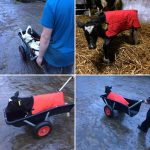
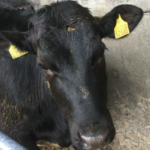
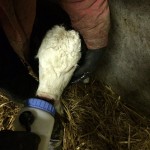
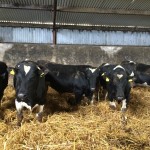
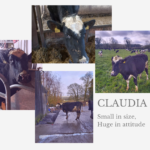
Matt Care
€850 seems a lot for a house this size (and €1200 even more so). Readers may like to think about pig arks as an alternative. The ‘Nissen-hut’ style corrugated ones have floor about 6′ by 8′ and are tall enough, at least along the ridge, for calves, I am sure – they are more like €400 but you would, admittedly, need some kind of gate on top of that.